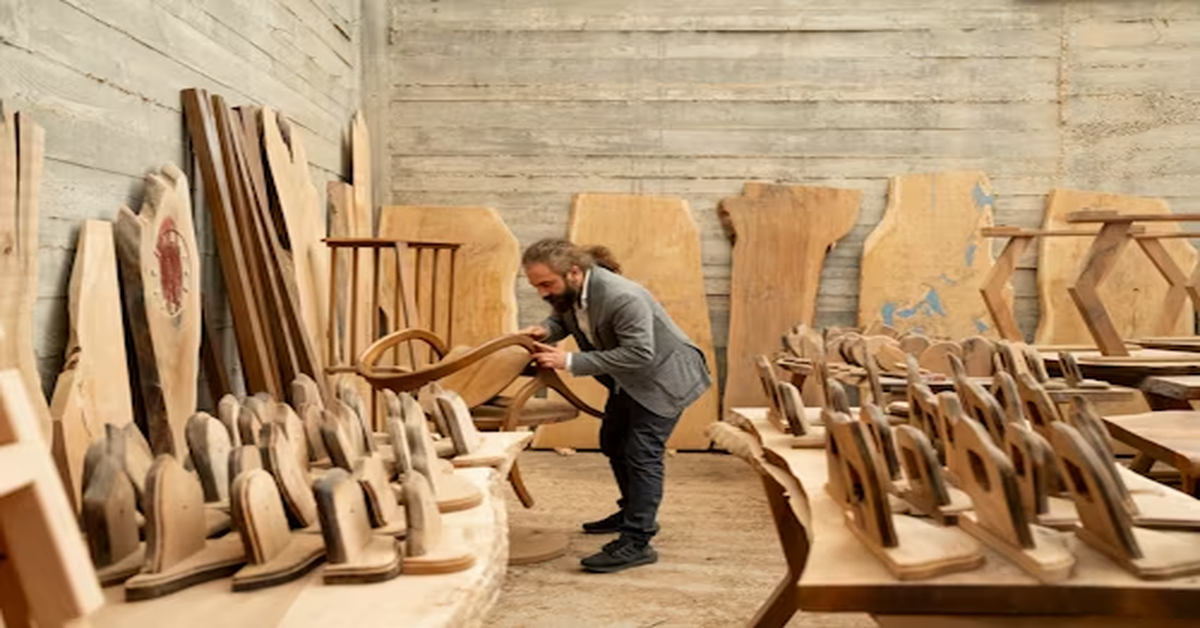
Woodworking has been one of humanity’s oldest and most enduring crafts. From the moment early humans shaped sticks and logs into tools or shelters, woodworking became deeply interwoven with civilization. Today, woodworking has transcended its role as a survival skill and evolved into an art form, a trade, and a therapeutic hobby. When people speak of James Woodworking, they are not merely referring to a name but a philosophy of craftsmanship that blends tradition, innovation, and dedication.
The combination of the personal element (the name James) and the universal craft (woodworking) gives “James Woodworking” a sense of individuality and trust. It implies an artisanal approach where each project carries the maker’s personality, creativity, and precision. In this article, we will explore woodworking in its fullest sense through the lens of “James Woodworking”—its meaning, tools, techniques, projects, design principles, benefits, challenges, and future trends. By the end, you’ll have a complete guide to understanding how woodworking remains relevant in the modern age.
The Essence of James Woodworking
At its core, woodworking is about transforming raw materials into functional and aesthetic creations. However, “James Woodworking” emphasizes three additional values:
- Personal Craftsmanship – Each piece reflects the artisan’s signature style, patience, and skill.
- Balance of Tradition and Modernity – Honoring centuries-old techniques while embracing modern tools and technology.
- Sustainability and Meaning – Using wood responsibly, ensuring each project serves a purpose beyond decoration.
This blend makes James Woodworking symbolic of excellence, where practicality meets creativity.
Tools of the Trade
Woodworking cannot be understood without tools. The right set of tools forms the foundation for every project.
Table: Essential Tools in James Woodworking
| Tool Category | Examples | Function |
|---|---|---|
| Measuring & Marking | Tape measure, marking gauge, combination square | Ensures accuracy in cuts and joints |
| Cutting Tools | Hand saws, circular saws, chisels, jigsaws | Cutting wood into desired shapes |
| Shaping Tools | Planes, spokeshaves, routers | Smoothening and shaping surfaces |
| Fastening Tools | Clamps, hammers, screwdrivers, nail guns | Securing joints and pieces together |
| Finishing Tools | Sandpaper, files, brushes, polishers | Giving the final smooth and polished look |
In James Woodworking philosophy, the focus is not on having the most expensive tools but the most reliable and suitable ones. Skill often outweighs the cost of the tool.
Techniques and Skills
Mastering woodworking requires developing a variety of skills. James Woodworking emphasizes patience, precision, and creativity across the following techniques:
- Joinery – Methods of connecting wood pieces, such as dovetail joints, mortise-and-tenon, and biscuit joints.
- Carving – Shaping decorative patterns with chisels, knives, or rotary tools.
- Turning – Using a lathe to create symmetrical, rounded pieces such as bowls, spindles, or chair legs.
- Laminating – Bonding multiple wood layers for strength and durability.
- Finishing – Sanding, staining, and varnishing for aesthetic and protective purposes.
Table: Popular Joinery Types
| Joinery Type | Strength | Common Use |
|---|---|---|
| Dovetail | Very strong | Drawers, cabinets |
| Mortise & Tenon | Strong | Furniture frames |
| Dowel Joint | Moderate | Shelves, light furniture |
| Biscuit Joint | Moderate | Tabletops, panels |
The artistry of woodworking lies not just in executing these techniques but in deciding which to use for each project.
Types of Wood Used in James Woodworking
Choosing the right wood is central to quality craftsmanship.
Table: Common Woods in James Woodworking
| Type | Hard/Soft | Characteristics | Common Uses |
|---|---|---|---|
| Oak | Hardwood | Strong, durable, attractive grain | Furniture, flooring |
| Pine | Softwood | Affordable, easy to cut | Shelving, rustic furniture |
| Maple | Hardwood | Smooth finish, durable | Cabinets, kitchen tools |
| Walnut | Hardwood | Dark, rich color, elegant grain | Luxury furniture, art pieces |
| Cedar | Softwood | Lightweight, aromatic, resistant to insects | Outdoor furniture, closets |
In James Woodworking, the selection of wood isn’t just about availability but also about matching the right wood to the right project.
Woodworking Projects
James Woodworking embraces a wide spectrum of projects, from simple beginner tasks to complex professional creations.
Beginner Projects
- Wooden coasters
- Bookshelves
- Small storage boxes
- Simple stools
Intermediate Projects
- Coffee tables
- Picture frames
- Cabinets
- Outdoor benches
Advanced Projects
- Intricate wardrobes
- Sculptural pieces
- Wooden musical instruments
- Decorative carvings
Table: Project Levels in Woodworking
| Level | Skills Needed | Examples |
|---|---|---|
| Beginner | Basic measuring, sawing | Coasters, shelves |
| Intermediate | Joinery, shaping | Tables, cabinets |
| Advanced | Precision carving, finishing | Wardrobes, sculptures |
This progression allows woodworking to be both an entry-level hobby and a lifelong mastery.
Benefits of Woodworking
Woodworking offers more than just functional outcomes. James Woodworking highlights the holistic benefits:
- Creative Expression – Every project is an artistic outlet.
- Stress Relief – Working with hands and focusing on details is meditative.
- Skill Development – Improves patience, problem-solving, and design thinking.
- Sustainability – Promotes reusing, recycling, and appreciating natural resources.
- Practical Value – Produces useful household or artistic items.
Challenges in Woodworking
Even though woodworking is rewarding, it comes with challenges:
- Tool Costs – Quality tools can be expensive initially.
- Space Requirement – Woodworking often needs workshops or dedicated space.
- Skill Barrier – Complex projects require years of practice.
- Safety Concerns – Risks from saws, dust, and sharp tools.
- Material Costs – Exotic hardwoods can be costly.
Table: Benefits vs Challenges
| Benefits | Challenges |
|---|---|
| Stress relief | Tool and wood costs |
| Creative outlet | Safety hazards |
| Practical outcomes | Steep learning curve |
| Sustainability | Space requirements |
James Woodworking treats these challenges as part of the journey, not barriers.
Safety in Woodworking
Safety is non-negotiable. Essential safety practices in James Woodworking include:
- Wearing protective goggles and gloves.
- Using dust masks or respirators.
- Keeping blades sharp to prevent slips.
- Organizing workshops to avoid accidents.
- Learning correct handling of power tools.
Safety is treated as part of craftsmanship, not an afterthought.
Philosophy and Inspiration
James Woodworking is about mindset as much as skill. The philosophy emphasizes:
- Respect for material – valuing wood as a living resource.
- Patience in process – no rushing; the beauty emerges in time.
- Balance of function and beauty – ensuring projects are practical and aesthetic.
- Passing on knowledge – sharing skills with new generations.
Future of James Woodworking
The future of woodworking integrates technology and tradition. With CNC machines, 3D design software, and eco-friendly practices, woodworking will remain relevant while adapting to new demands. James Woodworking symbolizes this future: blending handmade authenticity with smart technology.
Conclusion
“James Woodworking” is not just about one artisan’s name; it symbolizes a broader philosophy of craftsmanship, responsibility, and creativity. By merging tradition with modern practices, James Woodworking represents woodworking as both a timeless craft and a modern art. Whether it’s building a simple stool or crafting an heirloom wardrobe, the values behind James Woodworking—patience, respect, precision, and innovation—remain a guiding light for artisans worldwide.
FAQs
1. What is James Woodworking?
James Woodworking represents an artisanal approach to woodworking, combining traditional techniques, modern tools, and personal creativity.
2. What tools are essential for James Woodworking?
Basic tools include measuring instruments, saws, chisels, planes, clamps, and finishing equipment.
3. What types of projects are common in James Woodworking?
Projects range from beginner coasters and shelves to advanced wardrobes, sculptures, and instruments.
4. What makes James Woodworking unique?
Its balance of individuality, tradition, and sustainability sets it apart from mass-produced woodworking.
5. Can beginners start with James Woodworking?
Yes, woodworking is accessible to beginners who can gradually progress into complex projects with patience and practice.




